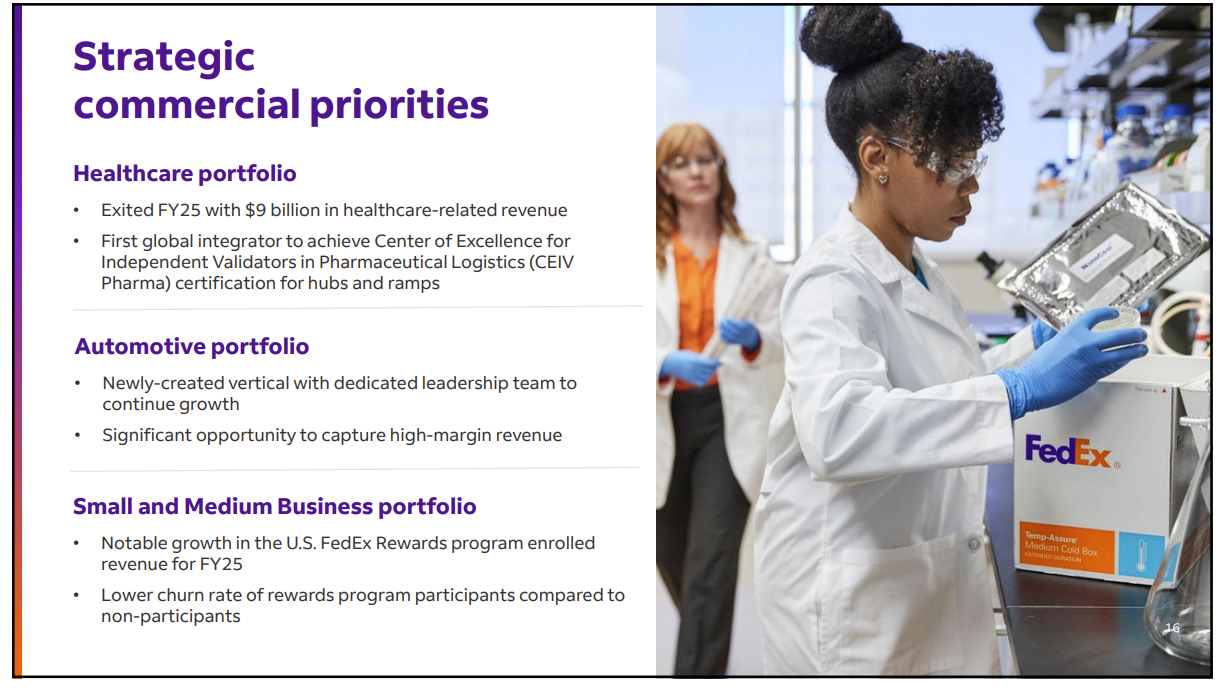FedEx is planning to leverage data, scale and digital twins to optimize its network and services amid uncertainty about global trade and the economic picture.
Speaking on an earnings conference call FedEx CEO Rajesh Subramaniam said the company is optimizing its supply chain and network as conditions warrant ahead of manufacturing shifts.
During the fourth quarter, Subramaniam noted that the supply chain patterns "are changing as we speak." For instance, FedEx is seeing growth in Southeast Asia as companies look to Vietnam over China. Subramaniam said the company has launched direct flights into Vietnam and routed through Singapore. Latin America demand is strong.
- Supply chain transformation critical as resilience worries stack up
- P&G outlines Supply Chain 3.0, next digital transformation moves
- Amazon revamps supply chain, last mile delivery, warehouses with AI models
- Walmart’s fiscal 2026 bets: Supply chain optimization, AI, automation
FedEx already has a global network and locations in multiple markets. "We get to flex our scale of the network that we build out because we don't have to do much different because we are already there in these markets," said the FedEx CEO. "We had to be careful making sure that our capacity is right in markets, but we can move faster than how manufacturing can move."
This constant change is what Subramaniam calls the "referendum on global supply chains every single day." To manage through that change, Subramaniam said data is critical. "For every country and every commodity, we have the data," said Subramaniam. "Not only do we have the data, but we have engineered it and created a digital twin."

Brie Carere, FedEx Chief Customer Officer, said the Covid pandemic led to supply chain diversification that's paying off now. FedEx's sales team in China notifies their counterparts when a customer is diversifying to another region. That data from the ground influences optimization decisions.
Given the data and scale of FedEx's network, the company has been able to adapt. However, the uncertainty over tariffs and supply chain disruption continues. FedEx provided an outlook for the first quarter, but not the fiscal year.
"It's very difficult to predict what is going to happen over the next 30 to 60 days or even further. And it's a dynamic environment," said Subramaniam. "We just have to live with that. The scale of FedEx comes into play in these kind of situations, both on the physical side and the digital side as the complexity and the friction increases and the trade flow patterns change."
As a buffer to the uncertainty, FedEx's Subramaniam said the company has taken out $2.2 billion in costs due to its DRIVE and Network 2.0 initiatives. Network 2.0 refers to optimization of FedEx's hubs and stations. FedEx expects another $1 billion in transformation savings in fiscal 2026.
FedEx reported fourth quarter net income of $1.65 billion, or $6.88 a share, on revenue of $22.2 billion, flat compared to a year ago. For fiscal 2025, FedEx reported net income of $4.09 billion, or $16.81 a share, on revenue of $87.9 billion.


